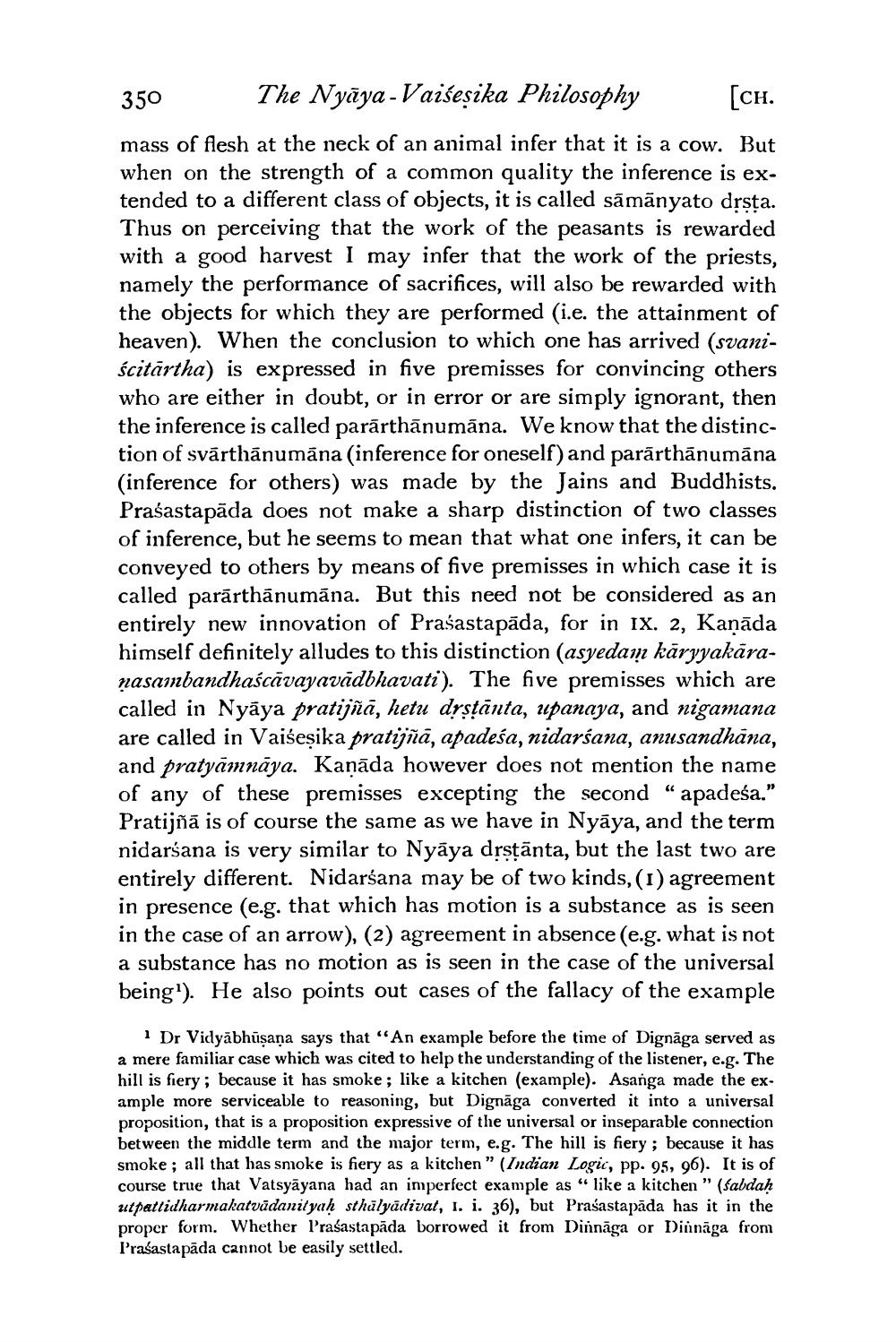________________
350
The Nyaya - Vaiseṣika Philosophy
[CH.
mass of flesh at the neck of an animal infer that it is a cow. But when on the strength of a common quality the inference is extended to a different class of objects, it is called sāmānyato dṛṣṭa. Thus on perceiving that the work of the peasants is rewarded with a good harvest I may infer that the work of the priests, namely the performance of sacrifices, will also be rewarded with the objects for which they are performed (i.e. the attainment of heaven). When the conclusion to which one has arrived (svaniścitartha) is expressed in five premisses for convincing others who are either in doubt, or in error or are simply ignorant, then the inference is called parārthānumāna. We know that the distinction of svarthānumāna (inference for oneself) and pararthānumāna (inference for others) was made by the Jains and Buddhists. Prasastapāda does not make a sharp distinction of two classes of inference, but he seems to mean that what one infers, it can be conveyed to others by means of five premisses in which case it is called pararthānumāna. But this need not be considered as an entirely new innovation of Prasastapāda, for in IX. 2, Kaṇāda himself definitely alludes to this distinction (asyedam kāryyakāranasambandhaścāvayavādbhavati). The five premisses which are called in Nyaya pratijñā, hetu drṣṭanta, upanaya, and nigamana are called in Vaiśeṣika pratijñā, apadeśa, nidarśana, anusandhāna, and pratyāmnāya. Kaṇāda however does not mention the name of any of these premisses excepting the second "apadeśa." Pratijñā is of course the same as we have in Nyaya, and the term nidarśana is very similar to Nyāya dṛṣṭānta, but the last two are entirely different. Nidarśana may be of two kinds, (1) agreement in presence (e.g. that which has motion is a substance as is seen in the case of an arrow), (2) agreement in absence (e.g. what is not a substance has no motion as is seen in the case of the universal being1). He also points out cases of the fallacy of the example
1 Dr Vidyabhūṣaṇa says that "An example before the time of Dignāga served as a mere familiar case which was cited to help the understanding of the listener, e.g. The hill is fiery; because it has smoke; like a kitchen (example). Asanga made the example more serviceable to reasoning, but Dignaga converted it into a universal proposition, that is a proposition expressive of the universal or inseparable connection between the middle term and the major term, e.g. The hill is fiery; because it has smoke; all that has smoke is fiery as a kitchen" (Indian Logic, pp. 95, 96). It is of course true that Vatsyayana had an imperfect example as "like a kitchen" (sabdaḥ utpattidharmakatvādanityaḥ sthälyādivat, I. i. 36), but Prasastapāda has it in the proper form. Whether Prasastapāda borrowed it from Dinnaga or Dinnaga from I'rasastapāda cannot be easily settled.




